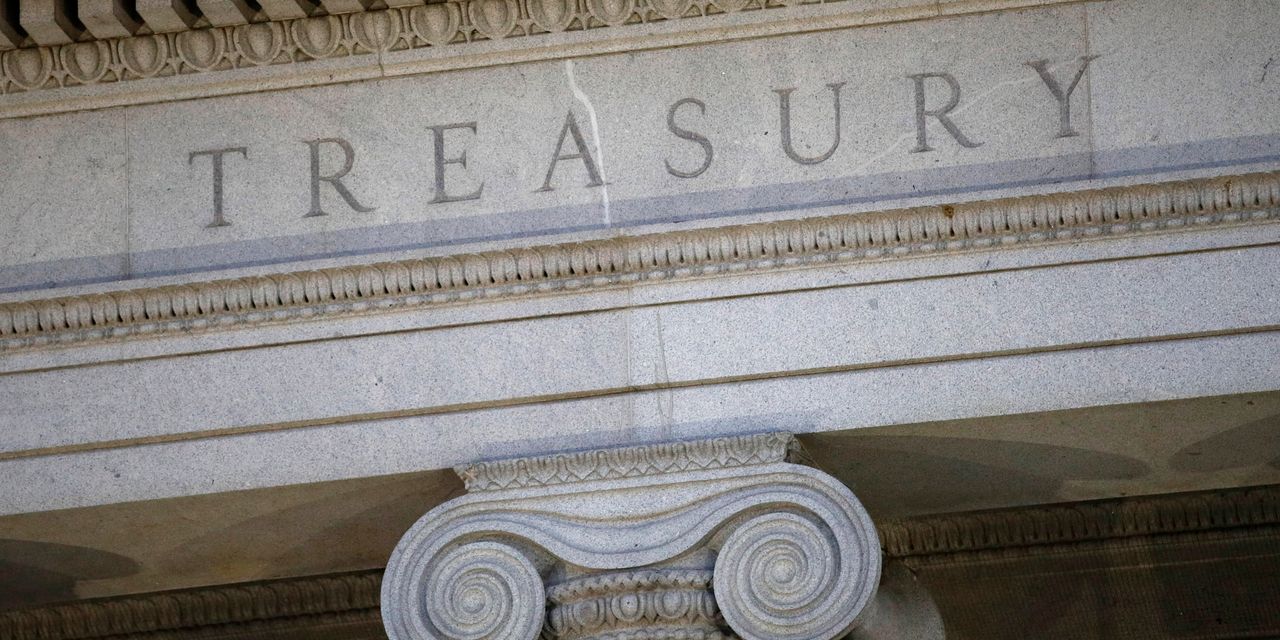On a day devoid of any major market-moving news, investors sent yields in the roughly $25 trillion Treasury market closer to or further above 5% on Wednesday.
It isn’t the level of yields that may prove to be problematic as much as it is the speed with which they got there, according to analysts, with the pace only accelerating since the Federal Reserve’s policy announcement last Wednesday.
Three years ago, during the U.S. onset of the Covid-19 pandemic, yields on everything from Treasury bills to the 10-year security were near zero. But in just the past handful of months, rates on 2-, 10- and 30-year government debt have all jumped by more than a full percentage point each from their 2023 lows.
One of the biggest factors that is sending long-term Treasury yields to multi-year highs is a recalculation of what’s known as term premium, or compensation that investors demand for the risk of holding a bond over the life of that security, according to Alex Pelle, an economist at Mizuho Securities in New York. Unlike the risk of holding cash, which is seen as limited, the same can’t necessarily be said for long-term government debt.
“What are the components of long-term yields? The market’s estimate of the long-term dot, or level which Fed officials see as appropriate for their main interest-rate target, and some term premium because investors demand compensation for duration risk,” Pelle said via phone on Wednesday. “One of the things that’s happening here is a re-evaluation of term premium, given a high fiscal deficit and large amount of supply coming on line.”
The move toward 5% Treasury yields “is not all a bad thing if it is an endorsement of the structurally higher growth environment we’re in, in which the economy is fundamentally more resilient than in the past,” he said. “But the other part of this is more negative, with investors worried about the trajectory of government debt and a huge deficit, plus the Fed’s quantitative-tightening effort.”
The speed of the current selloff in U.S. government debt is raising the possibility of renewed trouble for banks and other existing holders of Treasurys, which tend to get hit hardest by rising yields. TD Securities strategists Gennadiy Goldberg and Molly McGown said that a persistent selloff in bonds “increases the risk of ‘breaks’ similar to” those seen during the U.K.’s liability-driven investment crisis of last year and this year’s collapse of Silicon Valley Bank.
Global insurers surveyed by BlackRock Inc.
BLK,
prior to the recent run-up in market-implied rates cited the potential for more cracks to occur at banks as their biggest concern. And in a note addressing what it would take for the 10-year rate to reach 5% in the near term, BofA Securities strategist Bruno Braizinha said “we continue to recommend hedging scenarios where yields continue to push higher.”
Read: Global insurers overseeing $29 trillion in assets expect more cracks at banks
Wednesday’s selloff in Treasurys took off just before midday in New York, reversing the buying seen earlier in the morning. The 10-
BX:TMUBMUSD10Y
and 30-year yields
BX:TMUBMUSD30Y
respectively jumped to 4.625% and 4.731%, ending at their highest closing levels since Oct. 16, 2007, and Feb. 10, 2011. Big jumps were also seen in 3- and 20-year yields, which each rose to 4.9%.
“We are seeing a re-steepening of the curve with lots of yields going higher, including 3-, 5-, 7- and 10-year rates,” said Mizuho’s Pelle. “But is it going to break something? Certainly, there are people who are going to lose money. The speed of these moves is hurting investors, who were long duration. We’re moving higher in rates on a day when nothing else is happening. There’s an asymmetry in these market moves, as investors re-evaluate the yield levels at which they are willing to buy long-term government debt.”
Read the full article here













Leave a Reply